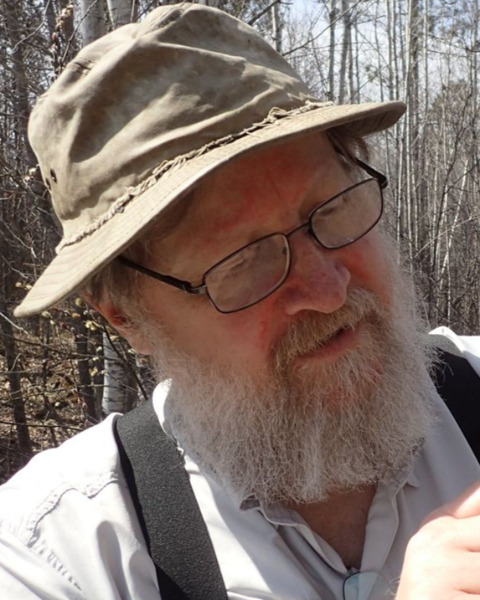Back
Contributed Talk
Session: : Communities: Paleoecology And Long-Term Dynamics 2
COS 300-1 - Old-school meets modern, continuing a multi-generational study of upland forests in Itasca State Park, Minnesota, USA.
Thursday, August 10, 2023
3:30 PM - 3:45 PM PDT
Location: B113

Mark R. Fulton, PhD
Professor
Bemidji State University
Bemidji, Minnesota, United States- BM
Becky Marty
Plant Ecologist
Minnesota Department of Natural Resources, United States
Presenting Author(s)
Coauthor(s)
Abstract: Difficulties common to long-term ecological studies – continuity of data collection, data integrity, and shifting scientific understanding – become especially pronounced in a multi-generational study. However, multi-generational studies are especially valuable because important processes occur over time scales well beyond the duration of a single scientific career. We report on the problems and paybacks associated with ongoing monitoring of a set of forest plots established in 1965. Full utilization of the data has involved both “old-school” and modern approaches.
In 1964-5, University of Minnesota forest ecologist Vilis Kurmis established a set of study plots in the upland forests of Itasca State Park, Minnesota, U.S.A. The study encompasses 30 sites distributed over the range of upland forest types in the park, with 8 monumented circular plots per site. The information collected is rich and multidimensional; in each plot Kurmis recorded tree dbh and species, shrub layer, understory vegetation, and ground cover – at 5–10-year intervals.
Networking (old school): Since Dr. Kurmis’s retirement , continued data collection has entailed the coordination of a shifting team of volunteers for a 2–3-week field season, once/decade.
Relocating plots (old school and modern): Study plots are monumented with metal stakes. Relocating these has been aided by GPS technology and metal detectors – but the most consistently efficient method of plot relocation is compass azimuth and pacing based on Dr. Kurmis’ original notes.
Data integrity (old school and modern): The tree data from 1965 alone comprise >16,000 lines. The data were originally carefully entered on punch cards, but some problematic records have appeared in computerized integrity checks. In most cases, we can correct these from original field sheets. Entering data from paper data forms across the entire study span is a massive ongoing project, and there is no substitute for reading and cross-checking by eye.
Old study design, modern statistics: The grouping of 240 study plots into 30 sites creates complications in the data analysis. Fortunately, modern statistical models, incorporating random and fixed effects, can handle this sampling design efficiently.
The payback is a record of overstory and understory dynamics on precisely located plots extending over half a century. We have already been able to test a simulation model of forest dynamics, assess soil changes related to invasive earthworms, and document changes in native plant community classifications. Ongoing research include drivers of forest change, and coupling of overstory and understory changes.
In 1964-5, University of Minnesota forest ecologist Vilis Kurmis established a set of study plots in the upland forests of Itasca State Park, Minnesota, U.S.A. The study encompasses 30 sites distributed over the range of upland forest types in the park, with 8 monumented circular plots per site. The information collected is rich and multidimensional; in each plot Kurmis recorded tree dbh and species, shrub layer, understory vegetation, and ground cover – at 5–10-year intervals.
Networking (old school): Since Dr. Kurmis’s retirement , continued data collection has entailed the coordination of a shifting team of volunteers for a 2–3-week field season, once/decade.
Relocating plots (old school and modern): Study plots are monumented with metal stakes. Relocating these has been aided by GPS technology and metal detectors – but the most consistently efficient method of plot relocation is compass azimuth and pacing based on Dr. Kurmis’ original notes.
Data integrity (old school and modern): The tree data from 1965 alone comprise >16,000 lines. The data were originally carefully entered on punch cards, but some problematic records have appeared in computerized integrity checks. In most cases, we can correct these from original field sheets. Entering data from paper data forms across the entire study span is a massive ongoing project, and there is no substitute for reading and cross-checking by eye.
Old study design, modern statistics: The grouping of 240 study plots into 30 sites creates complications in the data analysis. Fortunately, modern statistical models, incorporating random and fixed effects, can handle this sampling design efficiently.
The payback is a record of overstory and understory dynamics on precisely located plots extending over half a century. We have already been able to test a simulation model of forest dynamics, assess soil changes related to invasive earthworms, and document changes in native plant community classifications. Ongoing research include drivers of forest change, and coupling of overstory and understory changes.
